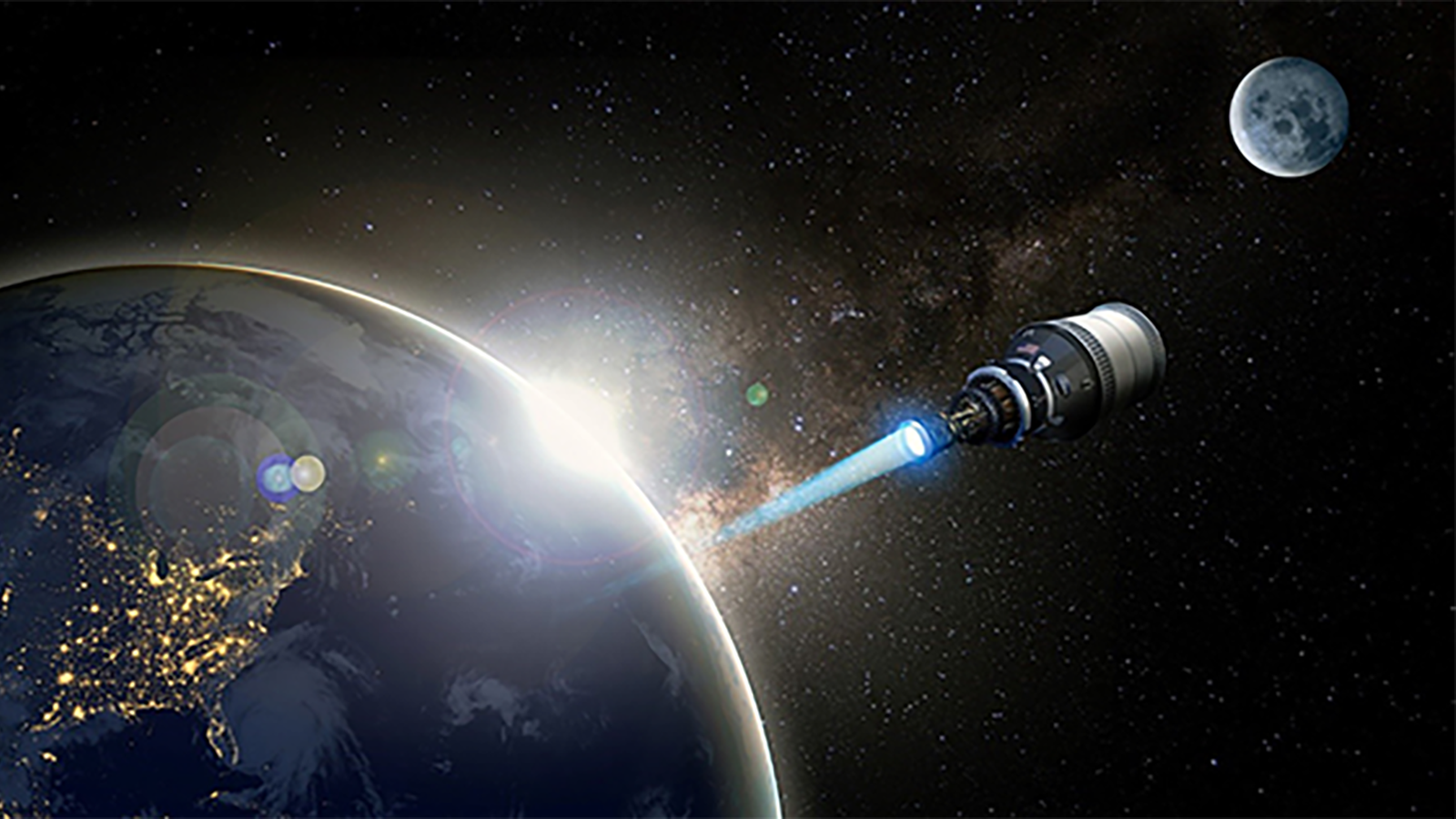 WASHINGTON — DARPA and NASA have jointly awarded Lockheed Martin a $499 million deal to design and build an experimental rocket using a nuclear thermal propulsion engine under the Demonstration Rocket for Agile Cislunar Operations (DRACO) program, aimed at future deep space operations.
WASHINGTON — DARPA and NASA have jointly awarded Lockheed Martin a $499 million deal to design and build an experimental rocket using a nuclear thermal propulsion engine under the Demonstration Rocket for Agile Cislunar Operations (DRACO) program, aimed at future deep space operations.
Funding for DRACO is split about evenly between the two agencies, Anthony Calomino, NASA’s space nuclear technologies portfolio manager, said during a briefing today.
The goal is to launch the demonstration sometime in fiscal 2027, that is late 2026 or early 2027.
A nuclear thermal rocket (NTR) uses fission, the splitting of atoms, for power just like terrestrial nuclear reactors for generating electricity. Thus, nuclear propulsion “offers a high thrust-to-weight ratio around 10,000 [times] greater than electric propulsion and with two-to-five times greater efficiency than in-space chemical propulsion,” according to DARPA’s website.
NASA has primary responsibility for the development of the NTR engine, which it hopes to be ready for primetime for its planned Mars missions circa the mid-2030s, Calomino explained. DARPA, meanwhile, is managing the process of getting DRACO’s rocket through environmental safety reviews, as well as launch vehicle requirements, development and integration onto a booster that will lift the experimental rocket into orbit.
As DARPA is a military organization, the secretary of defense, Calomino added, would therefore be the one to “have launch authority.”
To get the test engine into space, Tabitha Dodson, DRACO program manager at DARPA, said during the briefing that the Space Force will provide the launch vehicle, most likely a SpaceX Falcon 9 or Falcon Heavy, under the National Security Space Launch program.
In an interview with Breaking Defense back in January, Dodson said the Space Force has signed a “letter of commitment” to seek funding from Congress in the next five-year budget cycle (beginning with fiscal 2024) to pay for DRACO’s launch vehicle.
The Space Force is interested in DRACO primarily as an option for allowing it to undertake rapid on-orbit maneuvers — part of a capability service leaders now refer to as “space maneuver and logistics” — for example to avoid adversary anti-satellite attacks, or chase down suspicious adversary satellites to inspect them. However, it also has an eye on future operations in space beyond typical Earth orbits out to the Moon, Mars and maybe even beyond.
The two agencies announced the plan to jointly fund the demonstration in January, pooling earlier, separate efforts. DARPA awarded contracts to General Atomics, Blue Origin and Lockheed Martin in April 2021 for Phase 1 of the DRACO program, and in May 2022 put out a solicitation for Phases 2 and 3 to develop and test the engine and perform a flight demonstration. In July 2021 NASA contracted with three teams led by BWX Technologies, General Atomics and Ultra Safe Nuclear Technologies to design the nuclear reactor at the core of a such a rocket engine.
The new award covers Phase 2 and Phase 3 of the program, Kirk Shireman, Lockheed Martin vice president, Lunar Exploration Campaigns, explained during the briefing.
“Phase 2 was to complete the critical design of the of the spacecraft, and then Phase 3 was to actually build and launch and operate the vehicle,” he said.
While Lockheed Martin is the prime DRACO contractor, the firm is partnering with a unit of BWX Technologies, BWXT Advanced Technologies, that is providing the actual nuclear reactor technology at the core of the engine.
L3Harris selloffs hampered by low bids, CEO says
“To the extent we can get a good price for what we’ve identified as non-core [businesses], we’ll do it. But too many of the offers are coming in low and people think we’re desperate to sell, and I can assure you we’re not,” said L3Harris CEO Chris Kubasik.



























